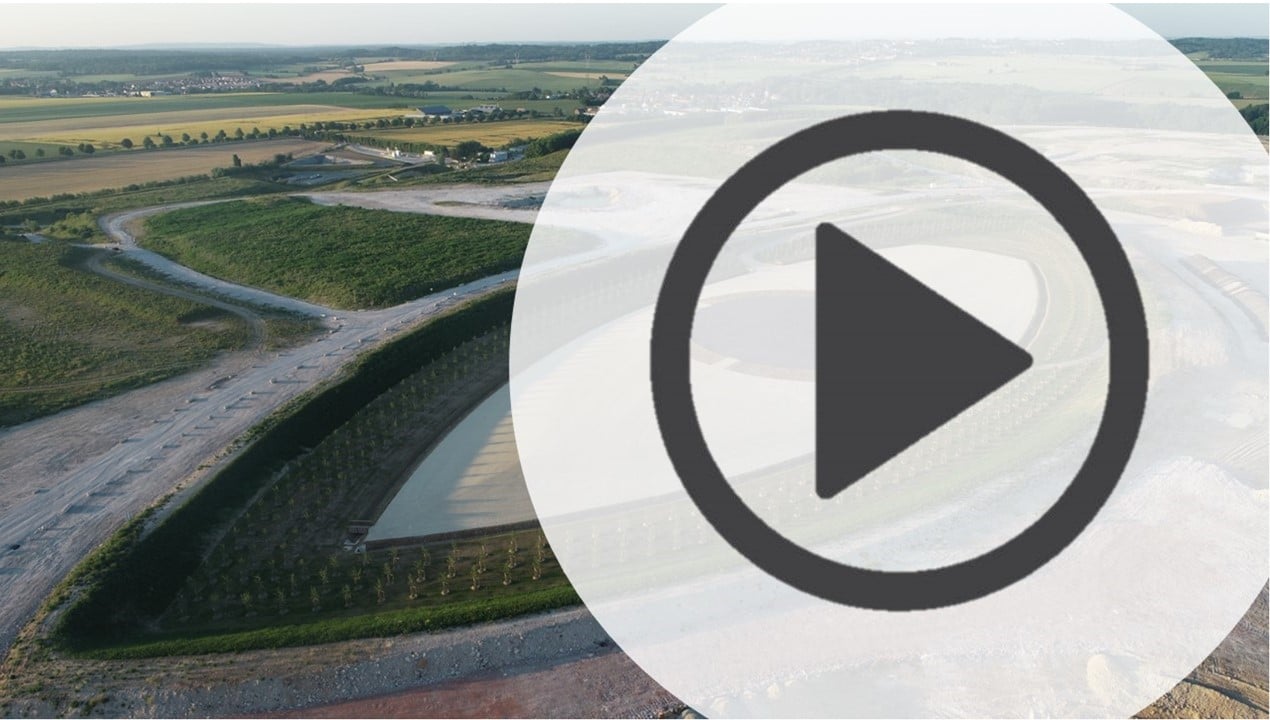Villeneuve-sous-Dammartin
GPS coordinates :
49.0310310, 2.6286292
L’Œil du Ciel, a land art work by Antoine Grumbach on the ECT site at Villeneuve sous Dammartin
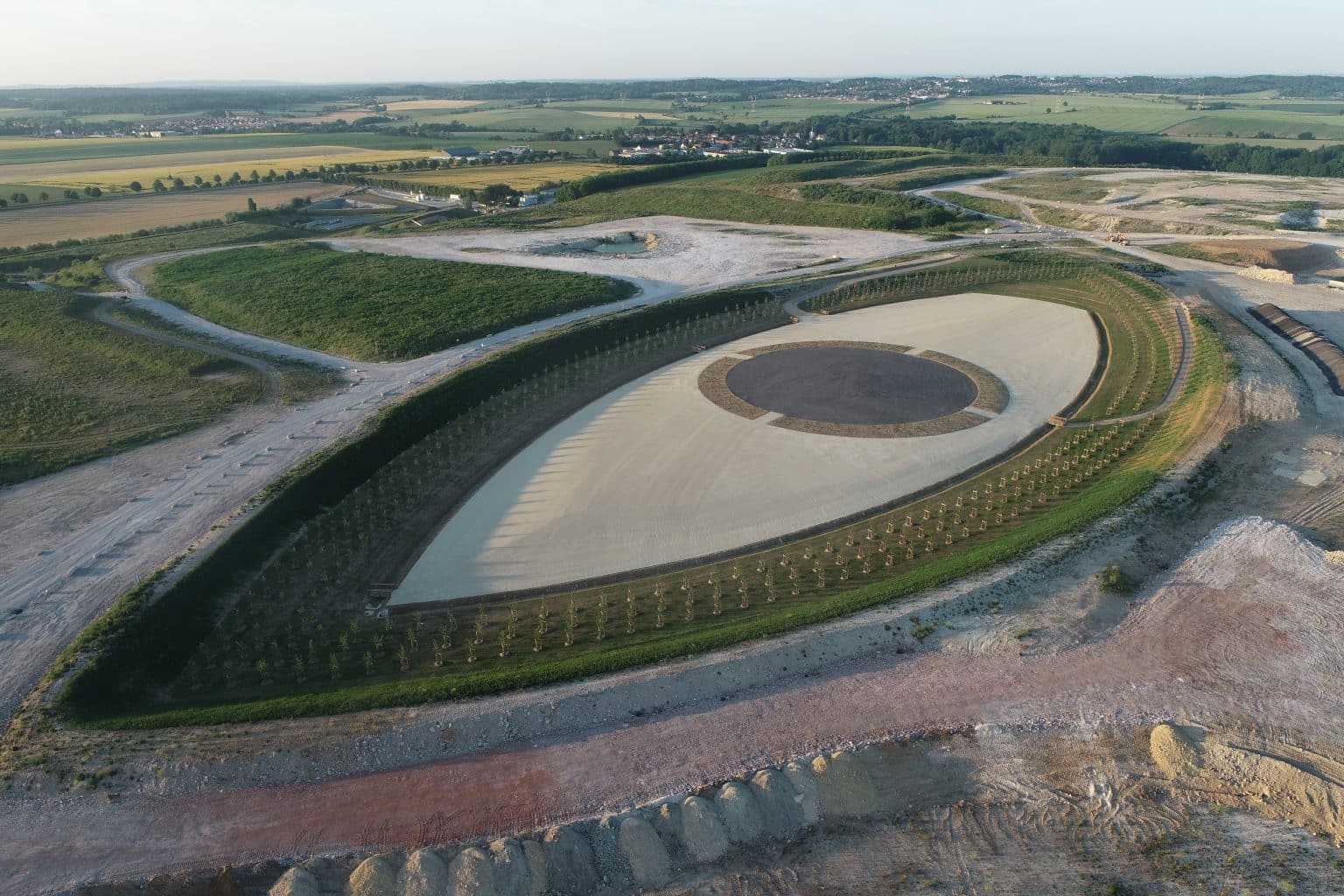
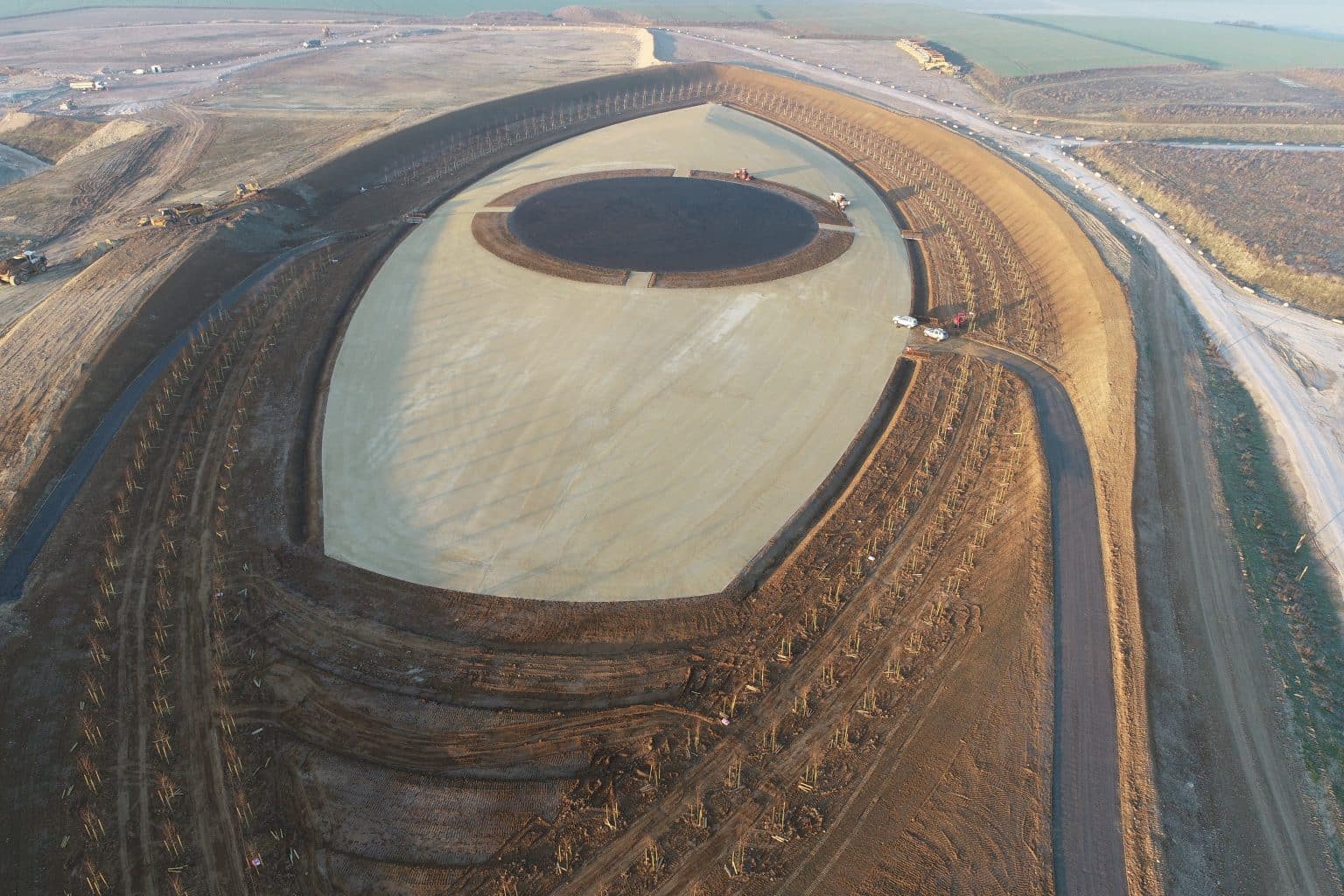
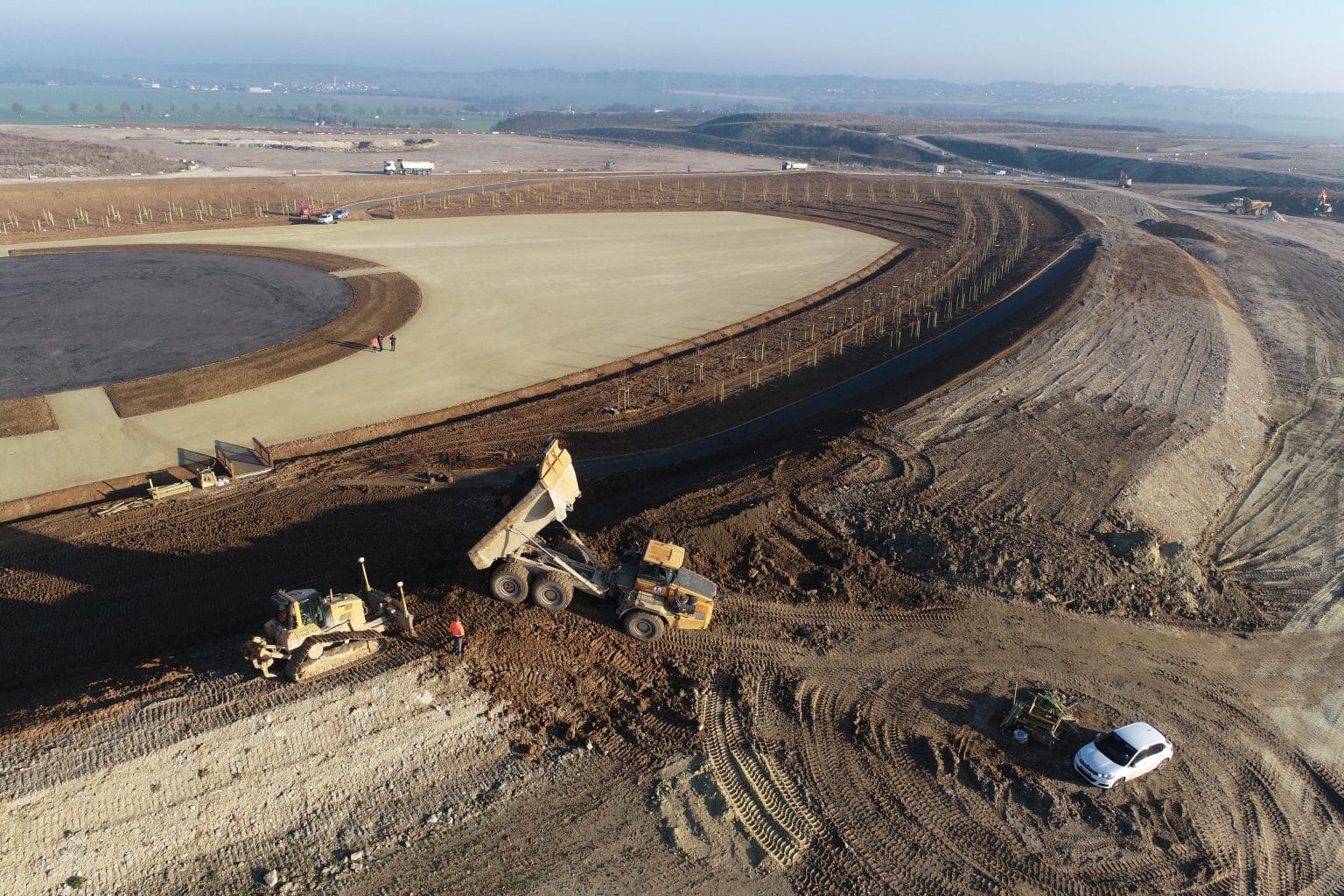
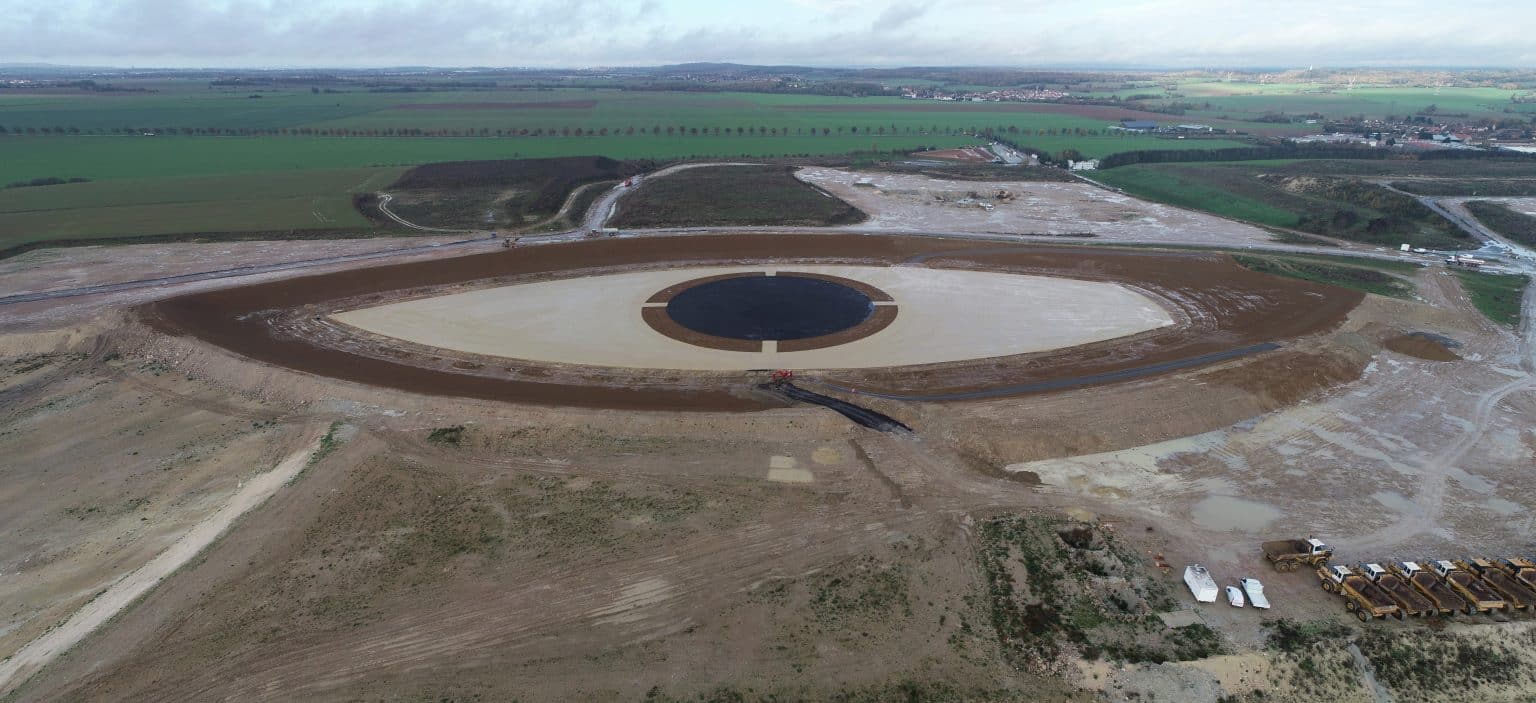
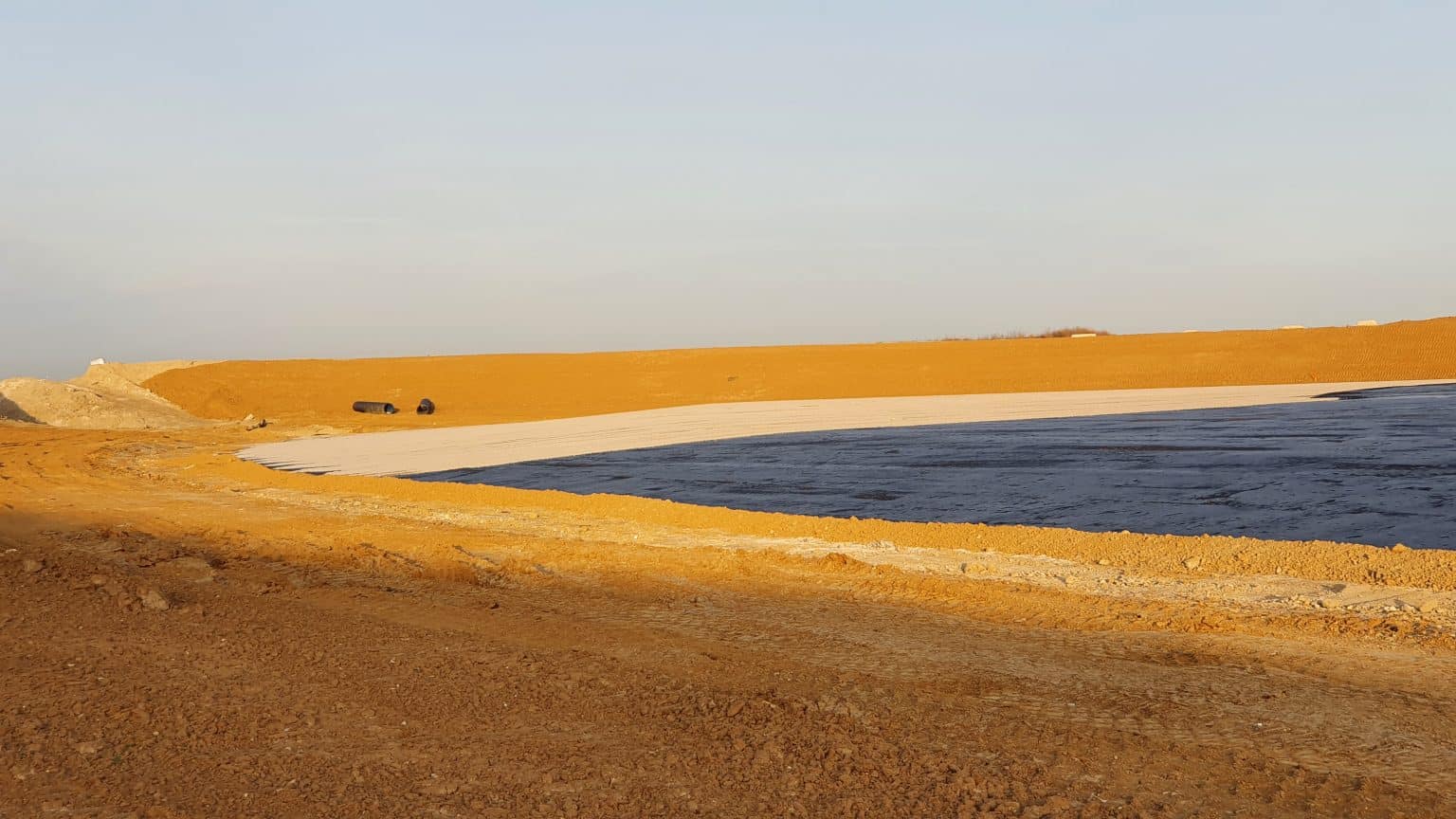
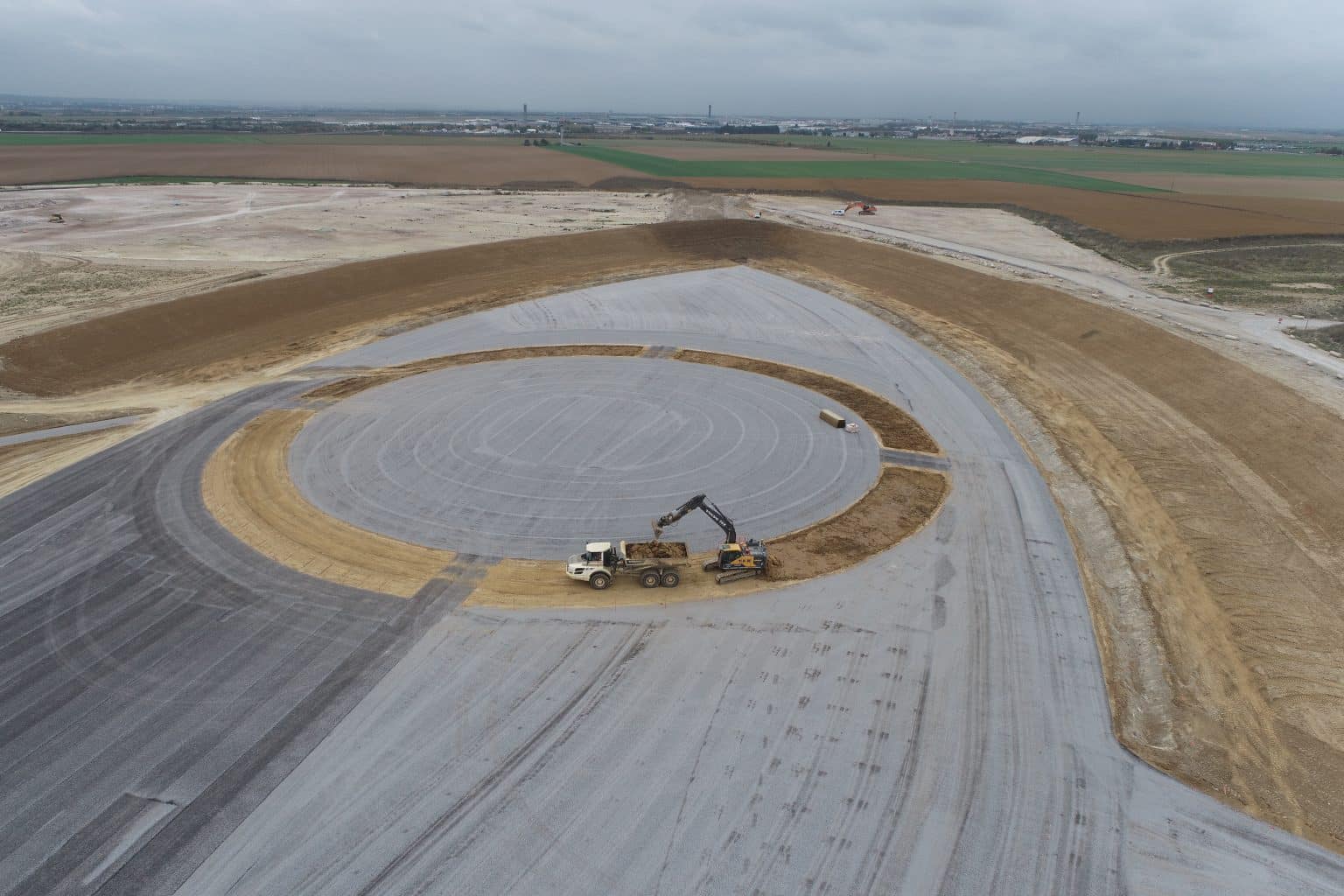
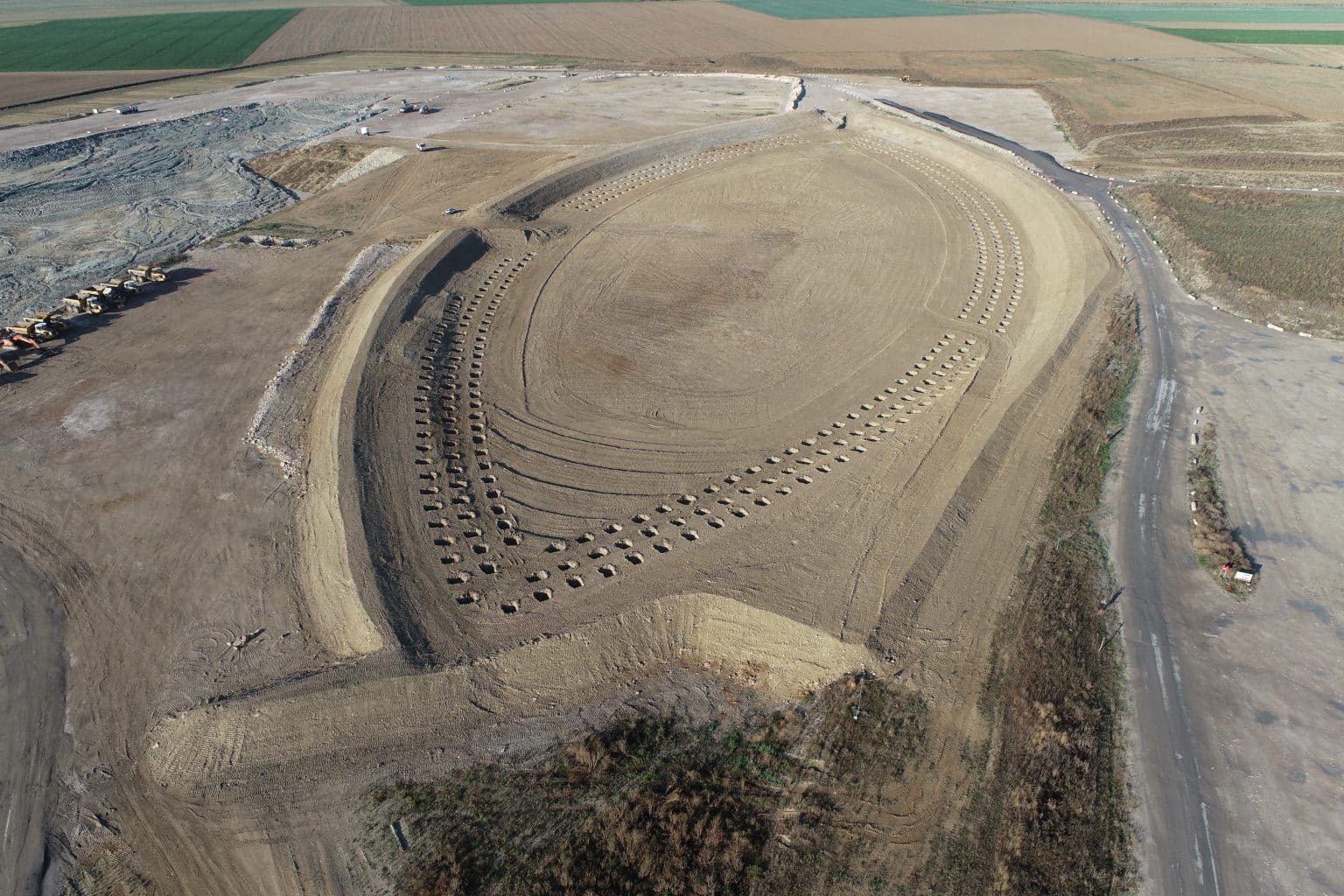
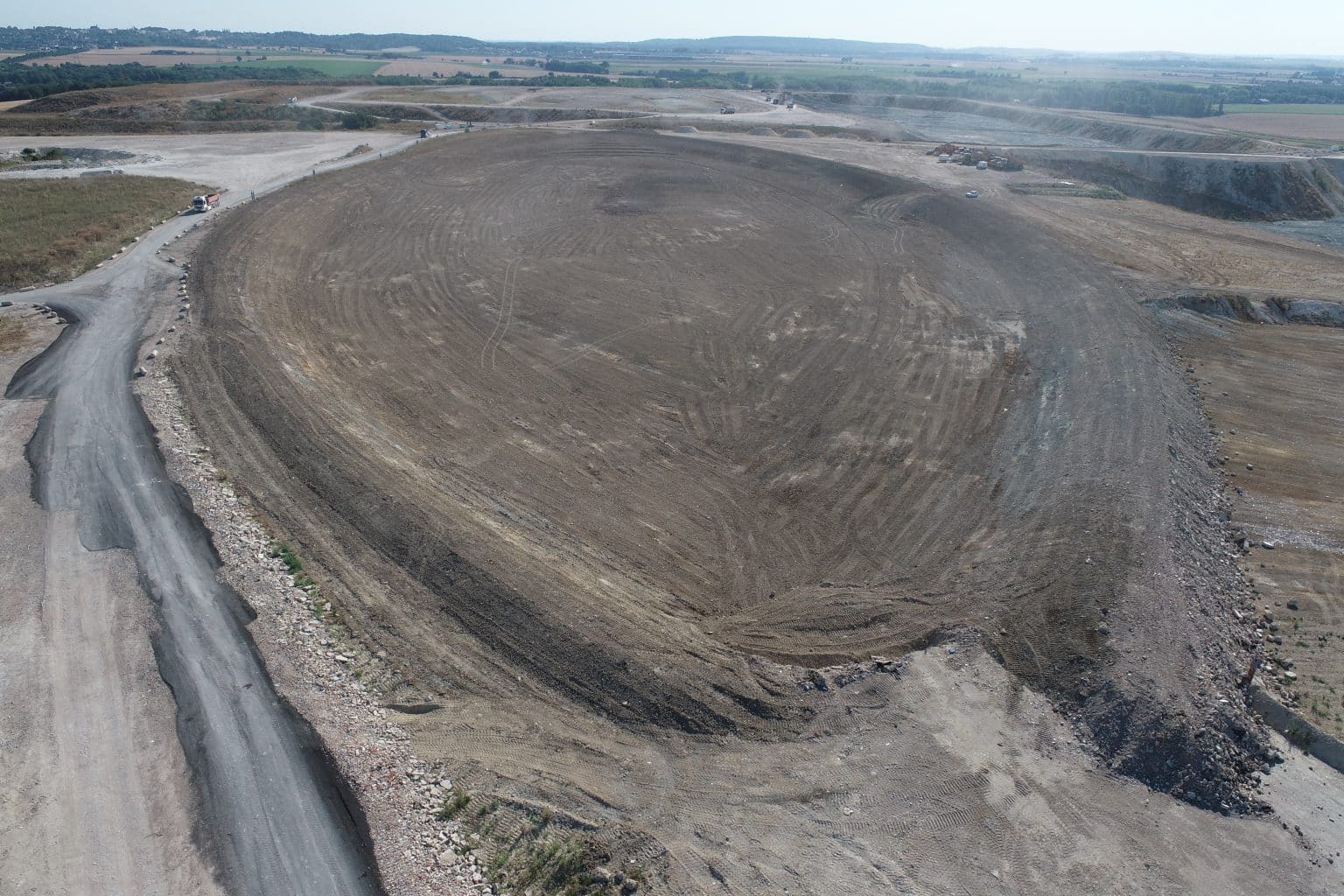
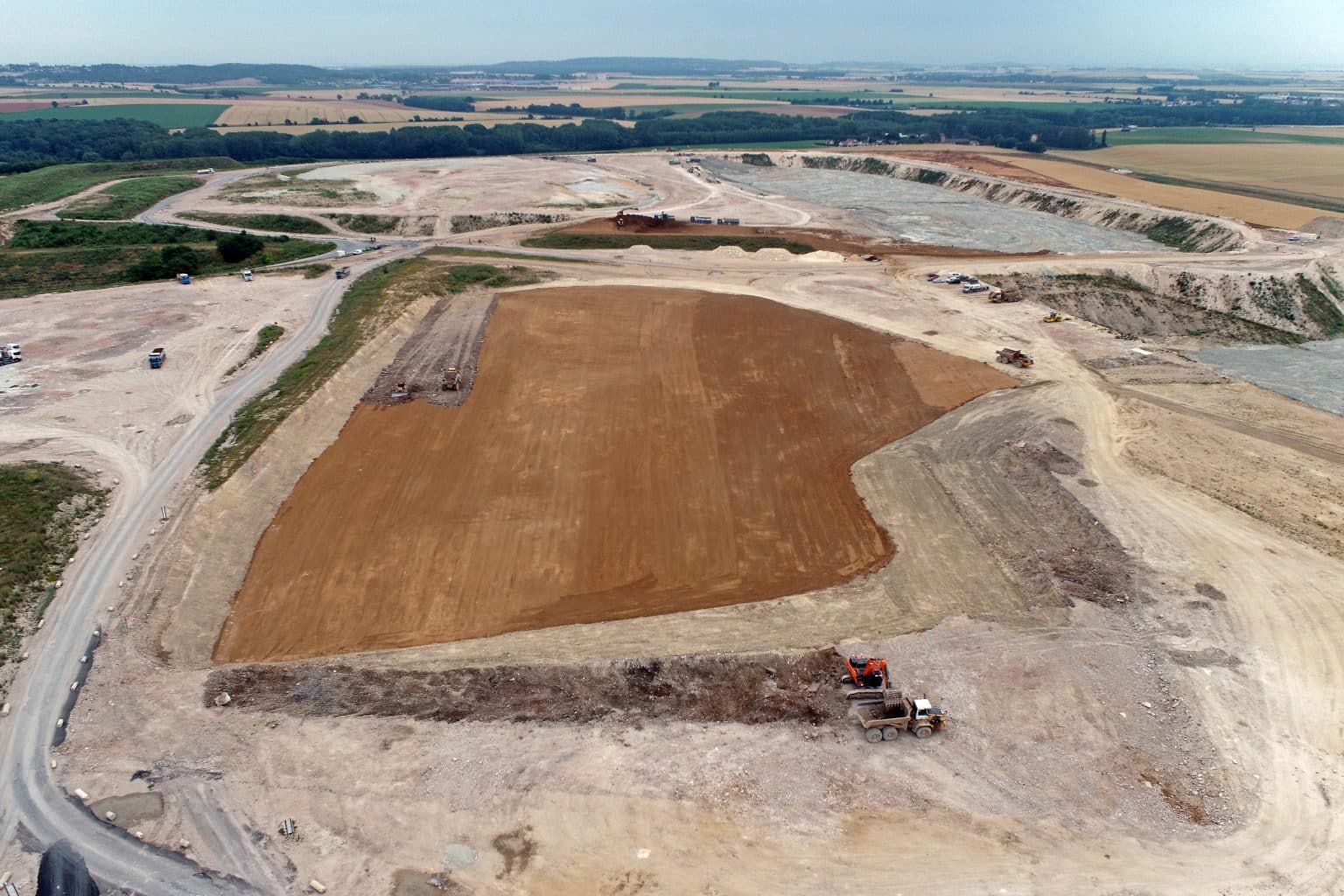
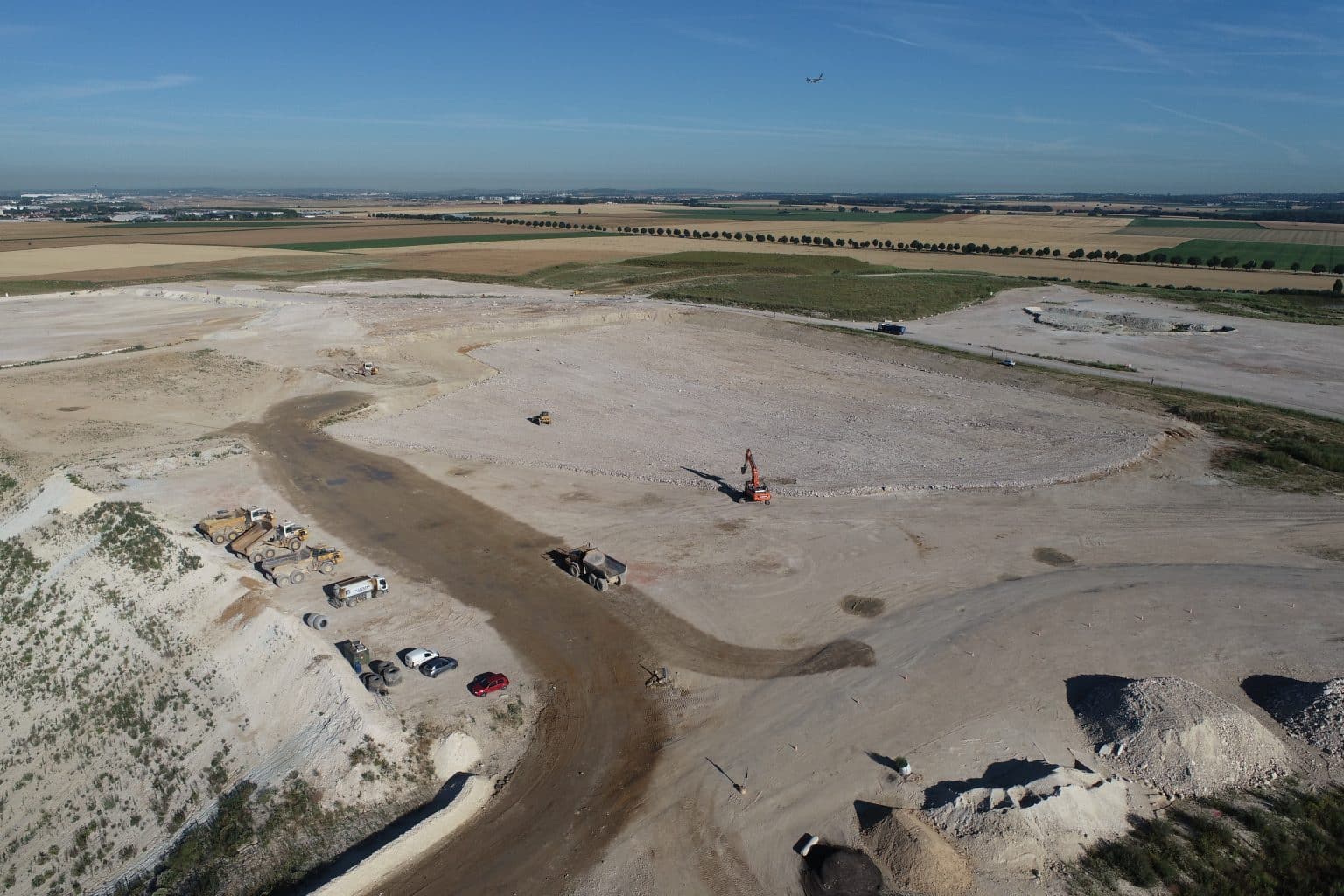
Types of layout
Landscaped urban park
Issues :
Green and nature in the city
Land art – Regional appeal
Status:
Realized
Project presentation
At its largest site for the reuse and recovery of excavated soil, ECT wanted to create something truly exceptional, a park open to all. Architect and artist Antoine Grumbach imagined 2 400-metre-long eyes: Les Yeux du Ciel. The Oeil Ouest is now complete and visible from aircraft at nearby Roissy CDG airport.
Key figures
June 2022
Start of earthworks
trees
plants
march 2023
Completion of work and planting
meters long
Project life
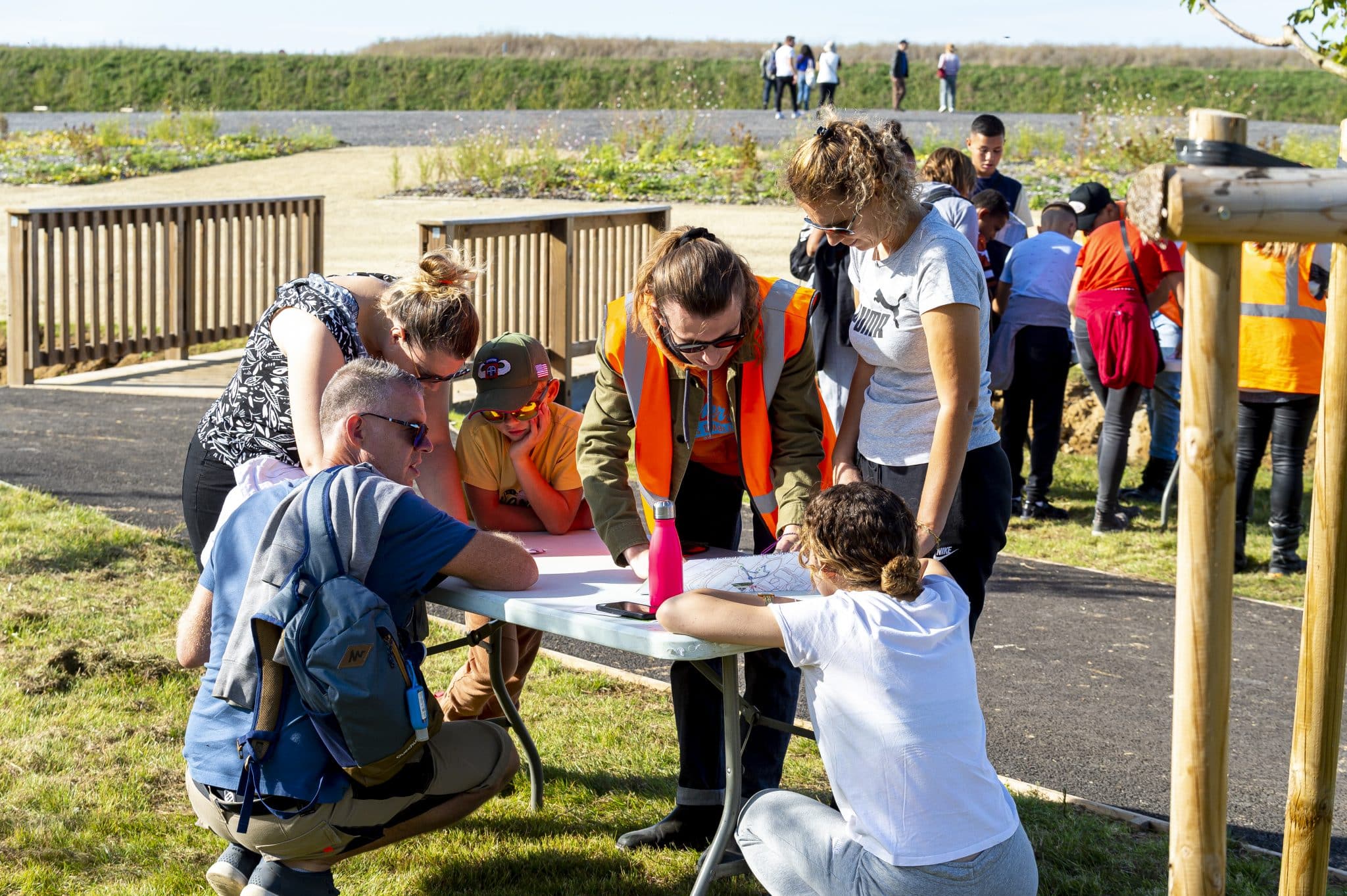
An escape game organized to showcase "L'Oeil du Ciel".
September 24 – ECT exceptionally opens its Villeneuve-sous-Dammartin site to the public. An opportunity to change perspective and look to the future of the site. More than 400 visitors became adventurers to discover the site. The highlight of the visit is the discovery of “L’Œil du Ciel”, a 400-metre-long work of land art designed by architect and artist Antoine Grumbach and to be built by ECT in 2023.
L'Oeil du Ciel - 8 months to build
It took 8 months for artist-architect Antoine Grumbach’s Œil du Ciel to take shape on ECT’s construction site in Villeneuve-sous-Dammartin. A work of land art created by site machinery and gardeners over 8 months of successive earthworks, followed by the planting of 400 trees and 12,000 plants.
The Eye of Heaven among the fields
Meet Jean-Baptiste Gautier, farmer at the ECT site in Villeneuve-sous-Dammartin (77) His farming practice? Conservation agriculture: farming techniques that enhance the soil’s agronomic potential. Eventually, the Œil du Ciel will be surrounded by fields: a true culmination of the landArt project imagined by Antoine Grumbach and ECT.
Getting lost in the Eye of Heaven
Get lost in l’Œil du Ciel, the landart work that intrigues passengers arriving at or departing from Roissy CDG airport. From sketch to finished work, discover never-before-seen images of Antoine Grumbach’s design.
The symbolism of the Eye of Heaven
Laurent Mogno, President of ECT, shares his interpretation of the symbolism of the Eye of Heaven for ECT’s business. When the excavated earth gives way to the finished landscape, ECT’s intervention becomes invisible.
A work of art between heaven and earth
Paris-Charles de Gaulle airport is the gateway to the Île-de-France region. With “L’Œil du Ciel” Antoine Grumbach has developed a new form of artistic expression: Aerial Art. This project on the scale of a metropolis is visible to travellers and, in time, will be a landscaped park in the Département de Seine-et-Marne.
The dream of Antoine Grumbach, artist and architect
Exceptional site, exceptional layout! Laurent Mogno, President of ECT, and Antoine Grumbach retrace the genesis of l’Œil du Ciel, the landart work to be created in 2023 in Villeneuve-sous-Dammartin. This new video reveals the intentions of ECT and the artist at the start of this exceptional project.
Excavated earth becomes a work of art
Laurent Mogno sees L’Œil du Ciel, the #landart project designed by Antoine Grumbach, as part of the circular economy approach that characterizes ECT’s business: reusing excavated soil from construction sites for landscaping, environmental and agricultural purposes. It should be noted that the construction site featured in the film l’Œil du Ciel is that of AP-HP, Assistance Publique – Hôpitaux de Paris hôpital Lariboisière, with partners CBC and SMTP PROMOTION, whom ECT would like to thank once again for their warm welcome.
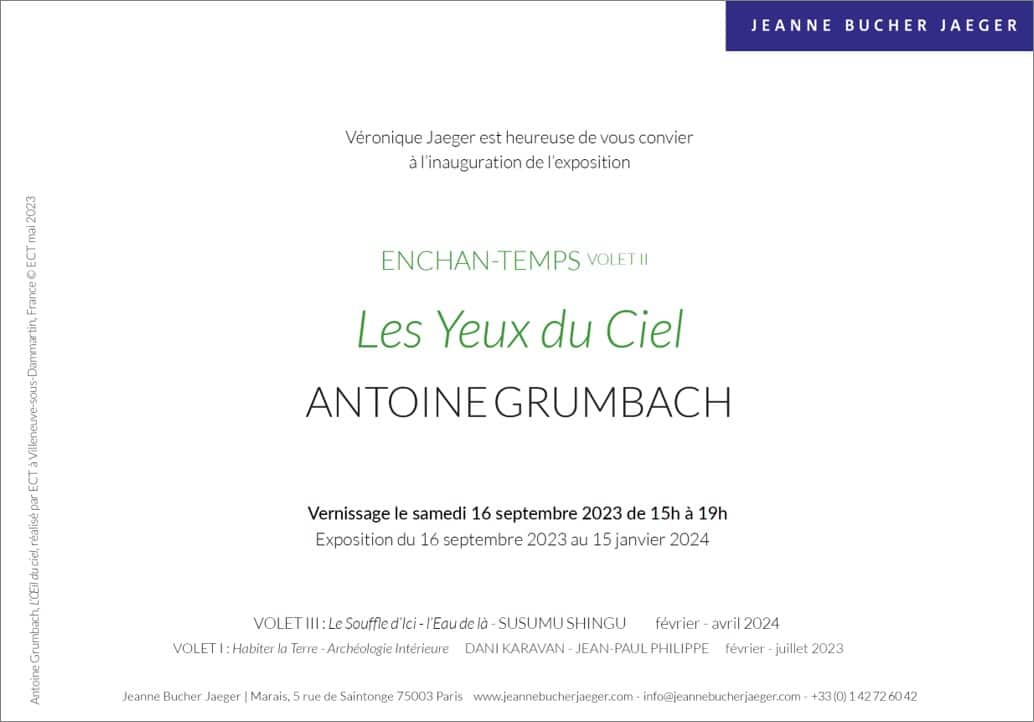
Antoine Grumbach exhibition "Les Yeux du Ciel" at Galerie Jeanne Bucher Jaeger - Paris
Véronique Jaeger is delighted to announce the second part of the annual ENCHAN-TEMPS cycle, the exhibition Les Yeux du Ciel devoted to artist-architect Antoine GRUMBACH.
The Galerie will present the clay and marble model-sculptures animated by his painted azulejo eyes, created by Viúva Lamego in Portugal, as well as the drawings, photographs and films of this monumental work of the same name on the scale of Greater Paris.
L'Œil du Ciel: understanding the genesis and realization of this incredible project
In this 15-minute video, Antoine Grumbach explains how to design a work of art on the scale of the Paris metropolis. Laurent Mogno, President of ECT, places the Villeneuve site and the Œil du Ciel in the context of the circular economy of excavated soil to be reused for the benefit of a territory. Jean-Baptiste Gautier, the operator of the site’s farmland, puts the work of art back in the middle of the fields. While civil engineering machines dig and shape the Eye, gardeners draw its contours.
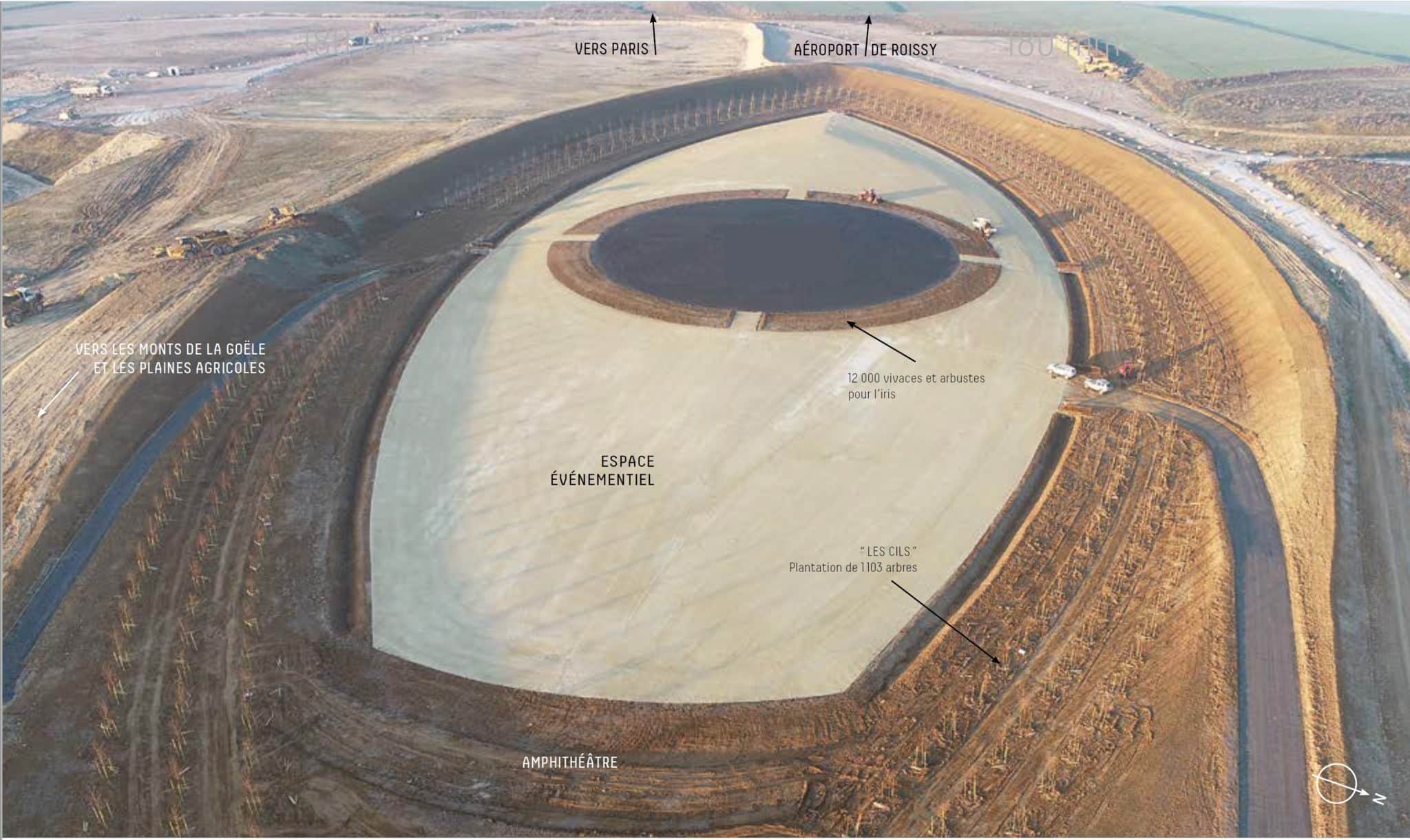
L'Oeil grand ouvert
“I see theeye of him who sees my eye”.
The 400-meter-long Eye is marked out by tree plantations. The boundaries are planted on a grassed mound. Today, it is part of a project to reclaim excavated soil still in use. Eventually, open to the public, it will become a venue for events and a park for strolling and pleasure.
Construction of the West Eye was completed in March 2023.
Work on the East Eye will begin in 2025.
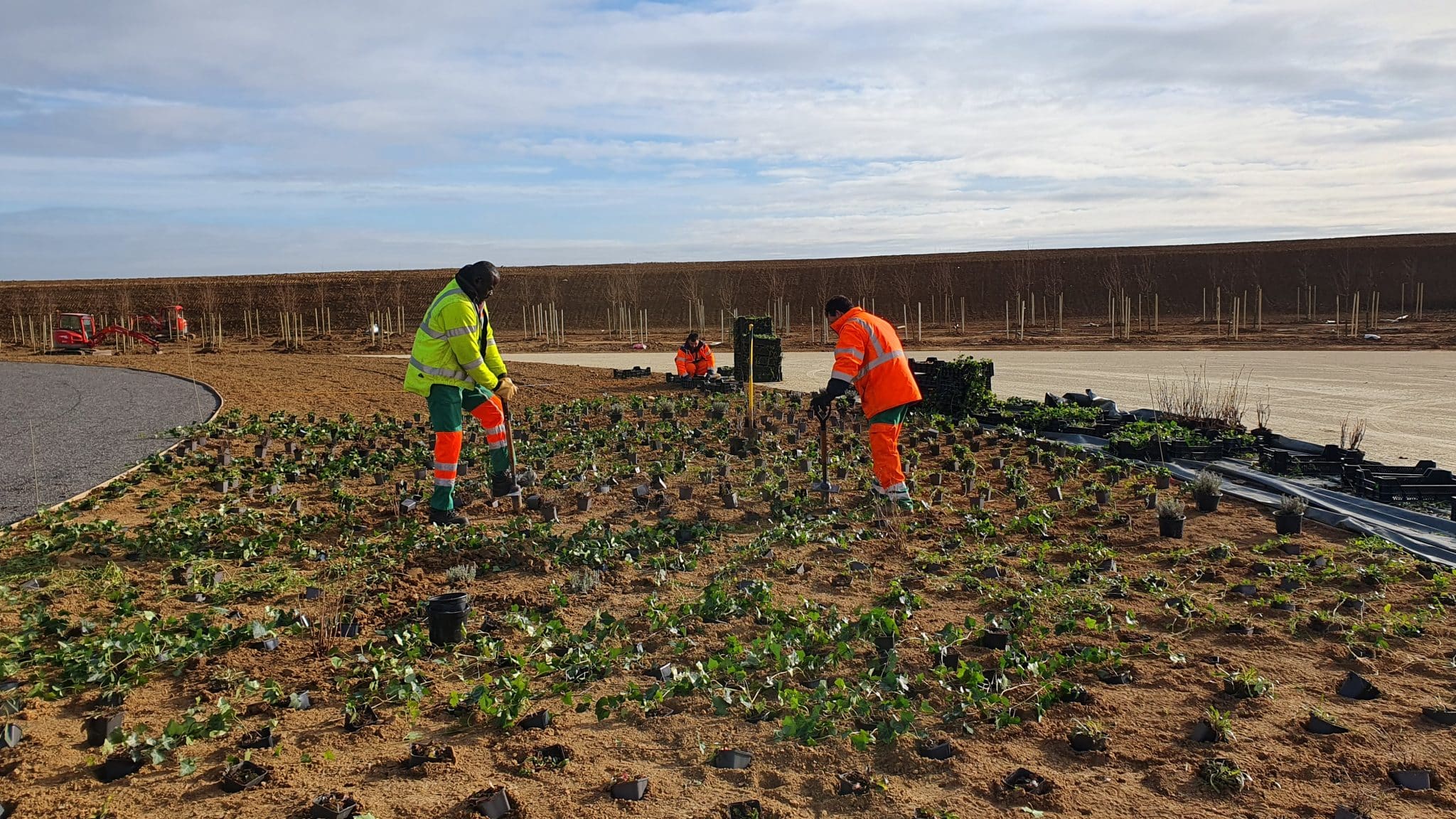
1,000 trees and 12,000 plants
to draw the Eye of Heaven
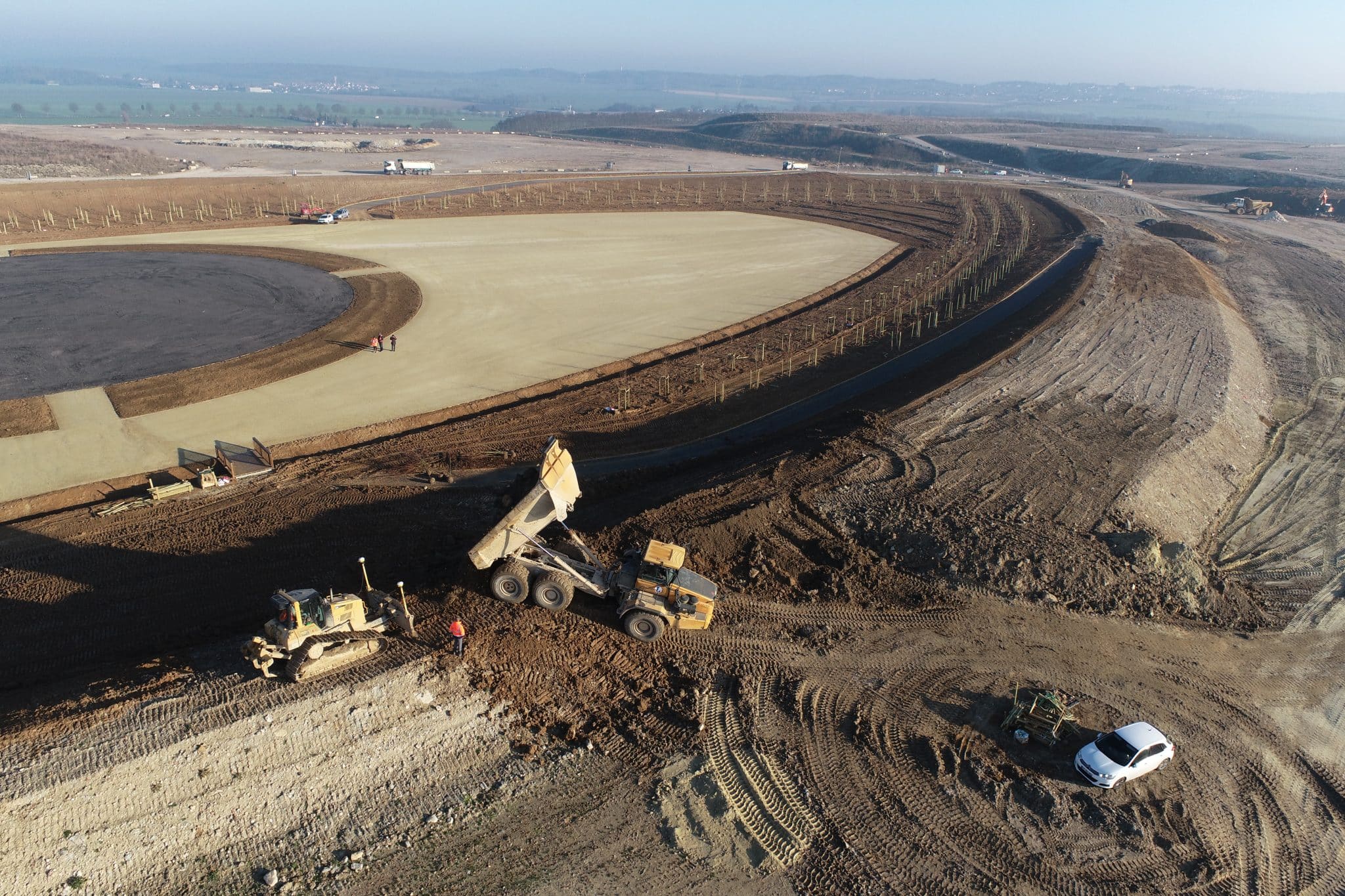
Work: June 2022 to March 2023
The stages of the project in 6 dates :
- June 2022 | Start of work and placement of the lower layer of silt.
- August 2022 | Modeling the shape of the eye with inert materials and soil.
- September 2022 | Earthworks for tree pits and topsoil.
- October 2022 | Treatment of silt underlay.
- November 2022 | Completion of earthworks and laying of finishing layer.
- February 2023 | Planting of the iris by schoolchildren from Le Mesnil-Amelot and Villeneuve-sous-Dammartin.
Design: Antoine Grumbach | AG Territoires
Owner ECT
Project management: Roland – Eiffage
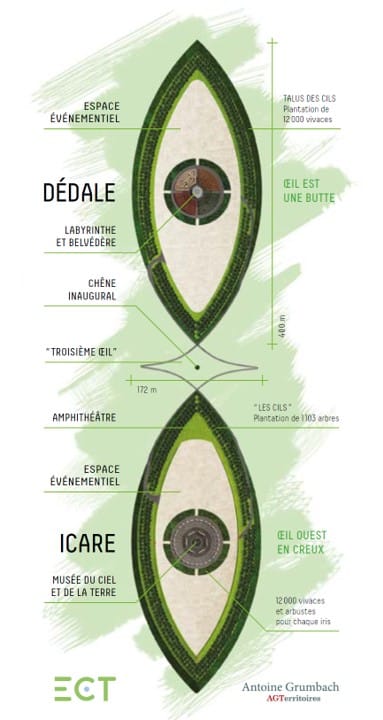
Designing an iconic work: Antoine Grumbach's Yeux du Ciel (Eyes of Heaven)
ECT commissioned Antoine Grumbach to create a work of art celebrating the land of construction sites in the Paris region.
A large-scale work of art
This work of Aerial Art is open to the gaze of Roissy CDG’s millions of annual travelers, becoming an observatory of the sky, watched by planes from all over the world. The 21st century, with the spread of air travel, is renewing the history of geoglyphs, those gigantic drawings facing the sky. Whether landing or taking off, airline passengers will meet the gaze of two wide-open eyes celebrating their welcome or farewell to the Paris region.
A metropolitan park in the north of Seine-et-Marne
By 2030 at the latest, the arrival of the Grand Paris Express line 17 terminal at Mesnil-Amelot, 1.5 km from the site, will result in new urbanization. The “Yeux du Ciel” (Eyes of the Sky) project offers the opportunity to create a new type of regional park in the vicinity, combining agriculture and leisure activities. Eventually open to the public, the park will evolve in line with new initiatives. Over the seasons, sporting events will share the space with themed, ecological or floral events.
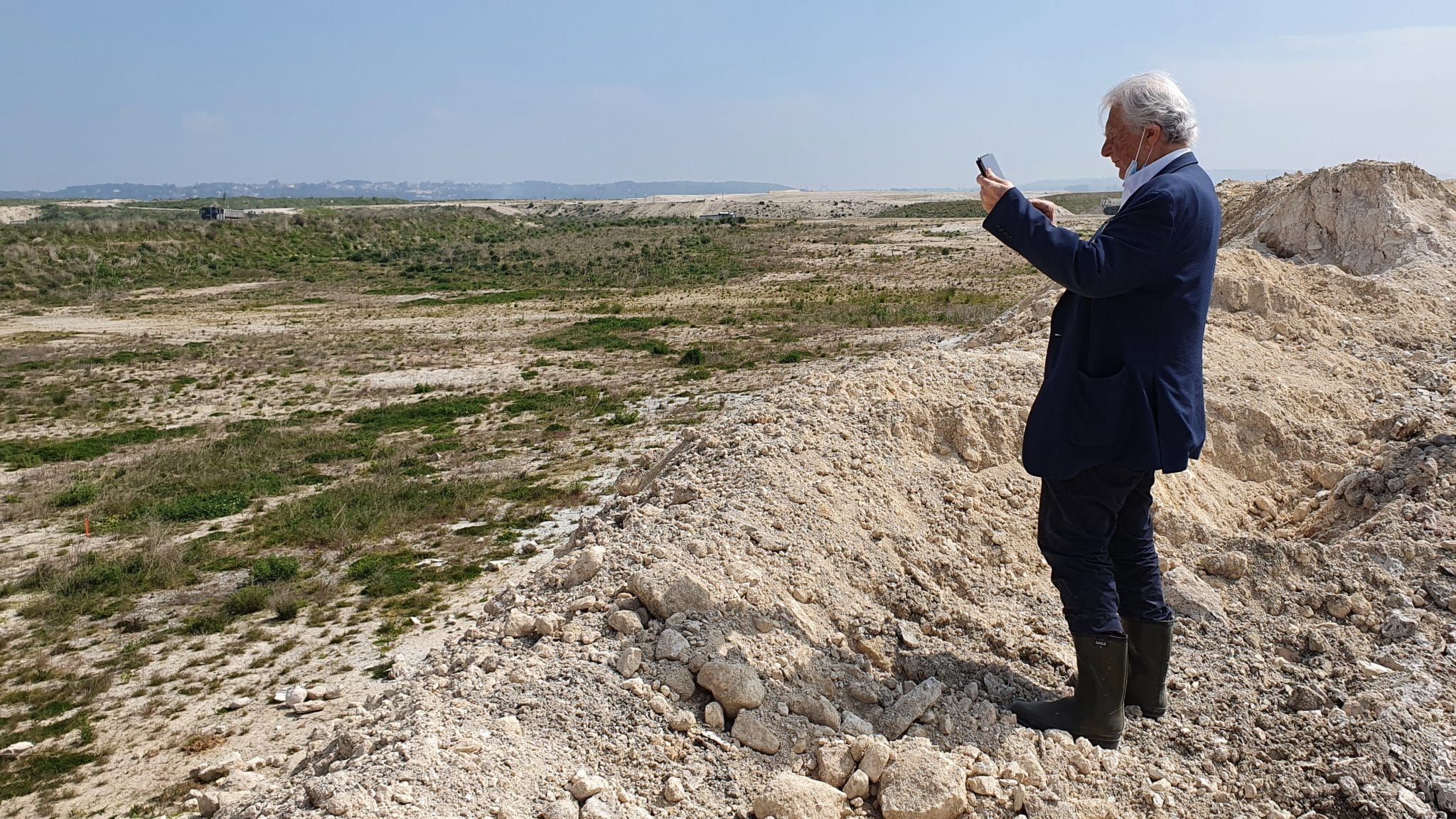
About Antoine Grumbach
Antoine Grumbach (1942) is an artist and urban planner. He graduated from the Ecole des Beaux-arts in 1967 and was awarded the Grand Prix national d’urbanisme et d’art urbain in 1992.
His international achievements and major architectural and urban planning projects are countless: the Cours Mirabeau in Aix-en-Provence, the inhabited Thames Bridge in London, the restructuring of Shanghai’s historic district, Greater Moscow, the Paris tramway and the Greater Paris “Seine Métropole”.
His essential reflection on the perpetual incompleteness of cities and the junction of the Metropolis with the territory of Nature, has been carried forward for decades by his work on Greater Paris and Greater Moscow. His long experience as an architect and urban planner has led him to the realization that by 2050, the majority of the planet’s inhabitants will be living in metropolises, to which it is essential to integrate territories of Nature.
As metropolises are inseparable from the land that supports them, Antoine Grumbach has taken a particular interest in urban flows. And so to soil from construction excavations. In the Paris region, they represent 20 million tonnes a year. For the artist-architect, these soils are a useful material for creating landscapes in the Anthropocene era.
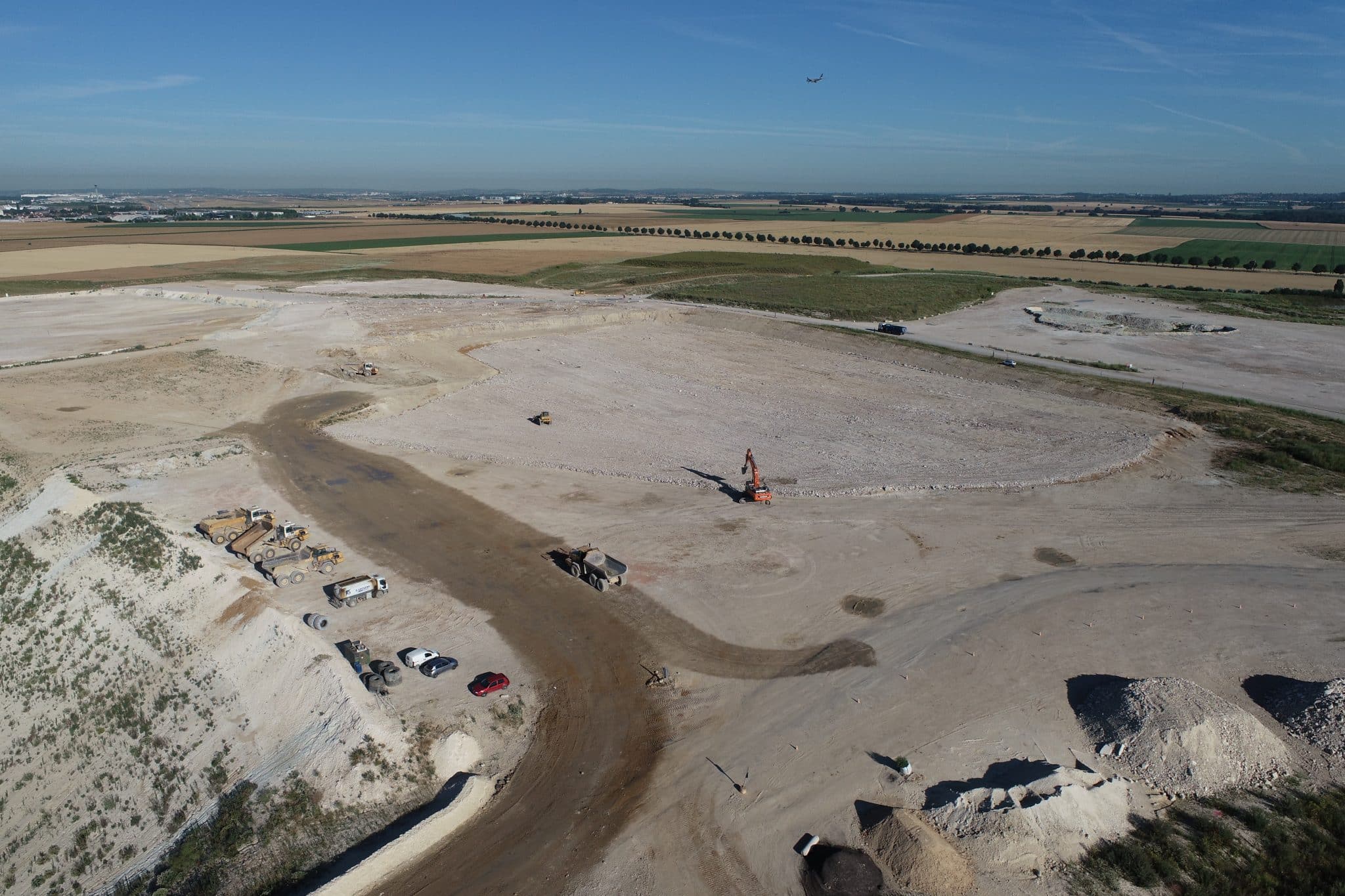
An exceptional site for recycling excavated soil: Villeneuve sous Dammartin in Seine-et-Marne
In the Monts de Goële region, between Villeneuve-sous- Dammartin and Le Mesnil-Amelot, along the D401, the ECT site covers an area of 191 hectares, over 1.2 kilometers long and wide. It is currently the largest excavated soil reclamation site in the Paris region. It receives soil from all the construction sites in the Paris region.
The site has the particularity of being in the axis of the Roissy runways, on a 191! hectare plateau of land 30! meters high, between agricultural landscapes and airport sites,
By way of comparison, in Paris, the site would correspond to a perimeter stretching from the Cour Carrée du Louvre to Place de la Concorde, and from the Left Bank to the Palais-Royal. Throughout its history, the site has always been used for agricultural purposes.
The north-western slopes, completed in 2005, are home to a wood reclaimed by abundant wildlife, a large apple orchard and apiaries. Located in line with the runways of Roissy Charles-de-Gaulle airport, the site is directly overflown by aircraft landing on or taking off from the northern doublet runways.
